The Australian Academy of Science was delighted to welcome 25 outstanding graduate students from the United States of America to Australia to participate in the East Asia and Pacific Summer Institutes (EAPSI) program for 2014.
This program has been developed in collaboration with the US National Science Foundation and aims to introduce the students to Australian science and engineering in the context of a research laboratory and to initiate personal relationships that will better enable them to collaborate with their Australian counterparts in the future. The eight week program began on 24 June 2014.
The Academy acknowledges the importance of research collaboration that goes beyond national borders and academic disciplines, and places great importance in strengthening exchanges that are both competitive and cooperative among talented young researchers.
It was with great pleasure that I read the participants’ reports to learn that so many achieved, if not exceeded their immediate research goals, and initiated strong collaborative links that will provide the foundation for lifetime cooperative research. I was also pleased to learn that several students have expressed interest in returning to Australia to further their research. These graduate students and the Australians with whom they shared their research will play an important role in advancing cooperative research between Australia and the United States in future years.
I would like to extend my gratitude to the Australian Government Departments of Industry and Education, as well as the Australian Embassy in Washington DC for their continued support in funding this program, and of course to our colleagues at the National Science Foundation. Without their kind assistance and cooperation, this important activity could not be sustained.
The Academy looks forward to continuing and expanding this program in 2015 and beyond.
Professor Andrew Holmes AM PresAA FTSE FRS
President
Australian Academy of Science
|
Morning |
Arrival at Canberra airport |
|---|---|
|
Afternoon |
At the Academy’s Ian Potter House: Lunch Official opening of EAPSI 2014 and overview of the Academy and administrative details at Ian Potter House Activity: getting to know your EAPSI colleagues |
|
Evening |
Informal dinner in Canberra’s CBD |
|
Morning |
Guided tour of the Australian War Memorial |
|---|---|
|
Afternoon |
Independent viewing of the Luminous World and Treasures exhibitions at the National Library of Australia Bus tour of Canberra |
|
Evening |
At the Academy’s Shine Dome: Lectures by Academy Fellows Professor Marilyn Renfree: Marvellous marsupials Dr TJ Higgins: Black Eyed Peas; they rock and some people want more of them Dinner with members of the Academy’s Council |
|
Morning |
At the Academy’s Shine Dome Breakfast with the US Ambassador to Australia, His Excellency Mr John Berry Introduction and viewing of the Old Masters Great Bark Artists exhibition at the National Museum of Australia Guided tour of New Parliament House |
|---|---|
|
Afternoon |
Question Time at New Parliament House EAPSI participants depart for host cities |
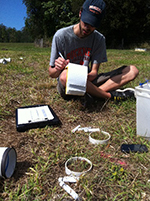 Australian research advisor: Dr Remke Van Dam
Australian research advisor: Dr Remke Van Dam
Australian host organisation: Queensland University of Technology
Title of research proposal: Investigating the viability of geophysical tools to map soil moisture variability in correlation with GHG emissions
Research description:
We used geophysical tools such as ground penetrating radar and electrical resistivity to monitor changes in the state of an agricultural field before and after irrigation, and correlated these results with gas sampling data from fertilised and unfertilised gas chamber pairs.
Research activities:
Gas sampling, geophysical data collection, irrigation.
Perspective of research after this program:
I believe this research will become an integral part of my PhD thesis, and hope that I can, in collaboration with my Australian advisor, Dr Remke Van Dam, complete at least one publication on the dataset over the course of this academic year.
Australian advisor’s remarks:
It was great to host Jon as an EAPSI NSF fellow in the Healthy Ecosystems and Environmental Monitoring (HEEM) group at Queensland University of Technology this July and August 2014. The work done by Jon at the Samford Ecological Research Facility (SERF) benefited not only from his NSF-EAPSI funding, but also from facilities supported by the Australian Terrestrial Ecosystem Research Network (TERN). Jon's research at the SERF site focused on a) a comparison of established and novel geophysical technologies for soil moisture mapping, and b) the effects of soil water and nitrogen fertilisation on microbial activity and greenhouse gas emissions in grassland. Both aspects of this research have great potential to contribute to academic discussion (e.g., methods, modelling) and practical advances (e.g., agricultural water and fertiliser management). I will continue to work with Jon to bring the research to published literature.
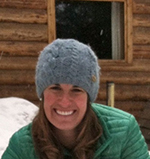 Australian research advisor: Dr Robert Magrath
Australian research advisor: Dr Robert Magrath
Australian host organisation: Australian National University
Title of research proposal: Psst. Pass it On: How animals communicate about danger
Research description:
Communication is an inherently social behaviour and needs to be addressed as a network with many senders and many receivers. I proposed to apply this network perspective to mobbing calls, which are signals used both within and across mammal and bird species to communicate about predators. Successful mobbing calls attract numerous individuals and species to the predator’s location to help drive it from the area. Mobbing events do not appear to be random, but organised communication networks with complex species interactions. Therefore, they offer unique opportunities to test how interspecific communication dictates species interactions and community structure and organisation. I tested how the information encoded in mobbing calls is used by other species in a communication network about danger. I used playbacks of single species and heterospecific combinations to test how the identity of the sender influences involvement in a mobbing event.
Research activities:
I used 2x3 microphone array in the Australian National Botanic Gardens in Canberra, ACT. I surveyed three grids throughout the gardens and ran two replicates of 11 stimuli: 1 control playback, 4 single-species playbacks and 6 hetersospecific combination playbacks. This resulted in 66 successful playback experiments. I also recorded behavioural data such as time of approach, distance of approach and number of individuals per species responding.
Perspective of research after this program:
During orientation we were told that our projects would probably change from what we proposed. Although the project I actually did is still in the same research area as what I proposed, it definitely changed. I actually think it turned out to be a pretty interesting project. Unfortunately in such a short period of time it was difficult to get a lot of replicates accomplished. However, I finished enough to be able to say something about how species are interacting in relation to who the information about danger is coming from.
Australian advisor’s remarks:
It was a pleasure having Alexis visit my lab. She was extremely well organised and energetic in pursuing her research goals, and accomplished roughly what she set out to do. A slight frustration was that time was short, which meant that it was difficult to get a large sample size. Nonetheless, her results were interesting and the methods worked well. Unfortunately, I was able to offer less help in the field that I had anticipated or wanted, due to an ankle injury, but did discuss her work almost every day.
In addition to carrying our her own work, Alexis' experience with the analysis of recordings from microphone arrays was useful for our own work, so the visit was mutually beneficial.
I'd definitely welcome further collaboration.
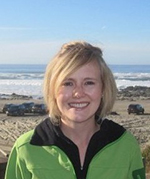 Australian research advisor: Dr Maria Byrne
Australian research advisor: Dr Maria Byrne
Australian host organisation: The University of Sydney
Title of research proposal: The potential impacts of ocean warming and acidification on the immune response of sea urchins
Research description:
Climate-induced changes in oceanic temperature and pH are occurring rapidly around the world, and are primarily attributed to increasing levels of atmospheric carbon dioxide (CO2). As atmospheric CO2 levels rise, it is predicted that surface seawater temperatures will increase while pH will decrease. These climate-induced changes could impact the health of many marine organisms. The intertidal sea urchin, Heliocidaris erythrogramma is commonly found in eastern Australian waters, a region that is experiencing rapid climate-induced environmental impacts. This project investigated the prospective effects of warming and acidification on various immune system parameters of Heliocidaris erythrogramma.
Research activities:
Sea urchins were exposed to treatments at current and near-future seawater temperature and pH and following three different exposure periods (1 day, 15 days, and 30 days), coelomocyte (cells associated with sea urchin innate immunity) number, ability to phagocytosis, and capacity to respond to a common marine pathogen (Vibrio anguillarum) was measured.
Perspective of research after the program:
It was a great experience. I especially appreciated being able to do my research at the Sydney Institute of Marine Sciences, where I had access to a great facility as well as daily contact with researchers from a number of Australian universities. It would have been nice to have had longer to complete my proposed research, but I know that the length of the program fits in well with the semester system in the United States.
Australian advisor’s remarks:
The research project that Cecilia undertook during her EAPSI Program was very successful. It was also very ambitions and Cecilia worked very hard to achieve the goals. She barely took any time off. The results are very interesting and provide interesting insights into the impacts of climate change on an ecologically important Australian sea urchin with applications to similar species elsewhere. I have no doubt that this work will contribute nicely to Cecilia’s PhD and will be incorporated in to an important publication. A particularly satisfying outcome of Cecilia’s visit was her close collaboration with one of my PhD students. They worked as a team and mentored each other in learning and exchanging expertise. Both of their research programs were enriched by the experience.
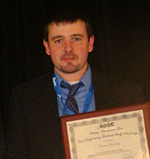 Australian research advisor: A/Professor Antoinette Tordesillas
Australian research advisor: A/Professor Antoinette Tordesillas
Australian host organisation: The University of Melbourne
Title of research proposal: Modelling of forces within sand during compression based on x-ray images
Research description:
As external loads are applied to mass of granular material, meso-scale columnar structures of particles known as force chains align in a nearly quasi-linear manner to resist the bulk of the applied load, and during the increase of loading the force chains will either continue to resist the load or buckle. Understanding how force chains behave given certain boundary conditions will help explain the macro-scale properties of the material and contribute to a micro-mechanical approach to modelling multi-scale behavior. Complex particle morphology and granular fabric, obtained from 3D x-ray computed tomography (CT) data of natural sand during, were analysed in the model and we will be comparing to idealised particles from Discrete Element Analysis.
During EAPSI 2014 we also provided some of our data for another research project that Antoinette was working on, beginning a new area of collaboration. The new project involved mapping our x-ray CT data to a graph and analysing the data using maximum flow and the minimum cut as a predictor to the location of the shear (failure) band within a granular material. Based on Antoinette's novel analysis, we were able to determine/predict the location of failure during triaxial compression of granular material much earlier than we previously could.
Research activities:
During EAPSI 2014, I initially encountered a steep learning curve trying to learn the analysis methods that the Professor Tordesillas uses to analyse data. Once I got a grasp on the methods, I formatted my data and through several iterations of formatting and analyzsng with Professor Tordesillas' novel methods we started to get reasonable looking data, both in the new research project and in the research project that was initially proposed. We are currently trying to wrap up a couple of journal papers on the research.
Perspective of research after this program:
We have a plethera of x-ray CT data at our home institution. Professor Tordesillas has techniques that can analyse all of it. We will continue discussion on the different ways we can analyse our various data, as well as extend on the current research.
Australian advisor’s remarks:
The research visit of Andrew Druckrey to my group here at Melbourne University has been a resounding success. We are in the process of preparing four joint papers for publication in top tier journals in granular media science and engineering. Both Andrew and our group learned a lot from each other during our many discussions. Indeed we will be showcasing the results of our joint research in various international conferences in the coming year including in the 2015 Engineering Mechanics Institute Conference at Stanford University. I congratulate Andrew Druckrey for the dedication and commitment that he has shown during his time at Melbourne. I also commend the Australian Academy of Science and the National Science Foundation for their support. Programs like the East Asia and Pacific Summer Institutes for U.S. Graduate Students are vital in promoting Australian science and engineering to US graduate students and it is a great pleasure to have been involved. This is especially worthwhile since the PhD scholar in this case received first-hand experience in conducting research that is not just outside of his own research area of experimental soil micromechanics, but well beyond the broad field of engineering and into the arena of science, in particular mathematics and statistics. This is a big leap in many respects and one that I am sure will serve Andrew well in his future career.
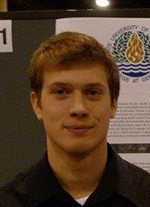 Australian research advisor: Dr James Gehling
Australian research advisor: Dr James Gehling
Australian host organisation: South Australia Museum
Title of research proposal: Biology and ecology of one of Earth’s earliest animals: Implications for the evolution of life on Earth
Research description:
Patterns of evolution, origination, and extinction of early animal life can be interpreted from fossils of the soft-bodied Ediacara Biota, Earth’s earliest known multicellular communities. The record of these organisms predates the well-known Cambrian Explosion by nearly 40 million years and provides critical information concerning early experimentation with complex life forms. Previous studies of the Ediacaran Biota have largely focused on determining phylogenetic affinities for these organisms, which is problematic at best. My research involves an alternative approach and examines the ecology and functional morphology of these organisms without trying to place them in previously determined taxonomic classifications.
The Ediacara fossil Dickinsonia offers a particularly good opportunity for the study of early ecology and evolution. Dickinsonia is one of the most abundant and recognisable members of the Ediacara Biota and is characterised by a wide range of preservational modes. Furthermore, there is evidence that Dickinsonia was mobile. There are currently five recognised species of Dickinsonia, making it the earliest fossil genera with multiple species. The Flinders Mountain Ranges and surrounding areas contain the best examples of Dickinsonia anywhere in the world and the collection at the South Australia Museum is home to hundreds of exquisite specimens. This research trip aimed to document as many examples of Dickinsonia as possible in order to better understand the paleoecology and biology of this important early life form.
Research activities:
The first phase of my research consisted of a month long trip to a field site west of the Flinders Ranges, South Australia. This site contains fossil organisms preserved as in situ community assemblages that allow detailed paleoecological investigations offered no where else in the world. Here I photographed and molded all available Dickinsonia and recorded data regarding different populations of this organism, their relationships with other organisms, and the environment in which they lived.
The second phase of my research was conducted at the South Australia Museum in Adelaide where I was able to examine and photograph hundreds more specimens of Dickinsonia. I was also able to mold the most unique and pristine specimens housed in the museum collections. My time at the museum provided in depth discussions of all things Ediacaran with Dr Jim Gehling, one of the premier experts in this field.
Perspective of research after the program:
The time I spent both in the field and at the South Australia Museum was irreplaceable in my progression as a graduate student and as an aspiring professional palaeontologist. In the field I was exposed to the problems of working on a National Heritage site where fossil material can never be removed, and in working with local Australians, in both paleontological research and community education. My time in Adelaide was also a learning experience in collections management and how to work in the museum environment.
The EAPSI program was incredibly beneficial in developing a working relationship with my host researcher that will last well beyond the completion of this work. Prior to this experience I had only brief communications with Dr Gehling but this program has vastly expanded that connection.
The data and photographs collected this summer will be added to a previously submitted manuscript. It will also be used in a presentation at the annual Geological Society of America meeting in Vancouver in October 2014, as well as to compose several manuscripts for submission in the near future. The material collected on this trip will become the main data for my Master's thesis, which I will defend in June of 2015.
Australian advisor’s remarks:
…
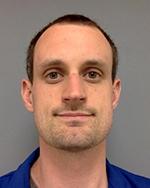 Australian research advisor: Dr Warwick Grant
Australian research advisor: Dr Warwick Grant
Australian host organisation: La Trobe University
Title of research proposal: Determining host seeking through olfaction in the nematode Parastrongyloides trichosuri
Research description:
My research focuses on how skin‐penetrating parasitic nematodes sense, discriminate, and infect the correct biological host. We call this type of behaviour host-seeking. Our research has focused on the human parasite Strongyloides stercoralis, due to its clinical relevance. However, for comparative purposes, we want to address host‐seeking behaviour in closely related nematodes with different biological hosts. My research for the NSF‐EAPSI program focused on expanding our analysis to Parastrongyloides trichosuri, whose native host is the Australian brushtail possum. P. trischosuri is unique among parasitic nematodes because it can be cultured indefinitely outside of the host making it amenable to a number of genetic and molecular techniques.
Research activities:
While at the host institution, I focused on learning how to properly maintain free-living P. trichosuri cultures. Mastering this technique required direct training from skilled researchers who are familiar with P. trichosuri. My goal was to adapt this technique so I could bring the cultures back to the US for further research. I now have healthy, free-living P. trichosuri in the USA. We plan to perform additional quantitative behavioural analyses, laser and genetic ablations studies, and calcium imaging to gain insight into the molecular and cellular mechanisms by which parasitic nematodes locate hosts to infect.
I also performed quantitative behavioural experiments to determine if P. trichosuri is attracted to host emitted odorants. Whilst visiting the host, I found that P. trichosuri does chemotax towards mammalian odorants and is also attracted to host faeces, suggesting that olfaction is a key sensory modality for finding their correct host.
Finally, we attempted gonadal microinjection of P. trichosuri as a method of transgenesis. This technique is commonly used in other nematode species, but has not been fully developed in P. trichosuri. I was successful at obtaining transgenic P. trichosuri but plan to continue these efforts at UCLA.
Perspective of research after the program:
I found the NSF-EAPSI program extremely rewarding from a research perspective. It was exciting to collaborate with other researchers working in similar arena. The parasitic worm research community is extremely small, so having the opportunity to visit one of the top labs in this field has been invaluable. My collaboration with Dr Grant has opened new research questions for both of our labs, and we plan on continuing our collaboration for some time. Not many early-career graduate students have the opportunity to directly set up international collaborations, so the EAPSI program provides a unique research perspective in that regard.
Australian advisor’s remarks:
Overall I found Spencer’s visit to my lab to be worthwhile and relevant to a number of our key projects. I have graduate students working on Parastrongyloides in the context of the evolution of parasitism and C. elegans as a model for neurodegenerative diseases, so Spencer’s background in nematode sensory neurobiology has allowed us to address research questions for these projects in greater depth. Spencer’s project also pushed us to use some techniques that we have not recently, but will in the very near future. His experience in this area will certainly help my graduate students with future studies. I am optimistic that Spencer’s visit will facilitate a long-term collaboration and a strong relationship with his home laboratory.
Furthermore, I think my students valued the interaction with a US graduate student. It has helped them understand and appreciate the expectations for graduate students at institutions outsode Australia.
Finally, Spencer was able to become a valuable member of the La Trobe community during his visit. He helped teach my undergraduate genetics laboratory practical and gave a department seminar on his research. Spencer was also a constant presence at our genetics seminar series, where he had the opportunity to interact with other Australian researchers outside of his immediate research field.
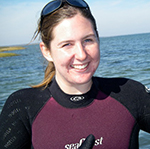 Australian research advisor: Dr Melanie Bishop
Australian research advisor: Dr Melanie Bishop
Australian host organisation: Macquarie University
Title of research proposal: Predator-prey interactions and global change: Response of bivalves and crabs to long-term acidification
Research description:
Ocean acidification is expected to have detrimental effects on the shell formation of many calcified organisms. The effect of ocean acidification on multiple interacting species should be explored to understand the effects of ocean acidification on ecosystem dynamics. Mangrove estuaries experiencing acid-sulphate soil runoff near Sydney, Australia provide an excellent natural laboratory for the study of ocean acidification and its effects on the ecosystem. This study will examine the effect of ocean acidification on a crab-oyster predator-prey system through two separate experiments, a caging experiment and a laboratory experiment, using a natural population of oysters that have been exposed to acidification for generations. This research will be conducted in collaboration with Dr Melanie Bishop, a noted expert on community ecology of mangrove invertebrates, at Macquarie University in Sydney, Australia.
In the source estuaries, Sydney rock oysters (Saccostrea glomerata) grown in either acidified or normal pH conditions will be enclosed in cages with mud crab predators (Scylla serrata) in both acidified and normal pH water for one week. The relationship between oyster mortality, the presence of mud crab predators, oyster source water pH, and experimental site pH will be examined using linear models. In a separate laboratory experiment, oysters from acidified and normal pH sites will be exposed to mud crab predation, and video of predator behavior will be used to calculate handling time (the time a predator spends manipulating or eating a prey item). The effect of acidification on handling time and oyster mortality will be examined using ANOVAs. This study expands upon ocean acidification research by examining the effect of global change on interactions between two commercially important species, and by using oysters that have had generations to adapt or acclimate to long-term acidification in a natural system.
Research activities:
1. Conducted mesocosm experiment to determine predation rate of mud crabs on oysters from acidified and non-acidified sites.
2. Conducted a reciprocal transplant experiment of oysters from acidified and non-acidified sites to determine short-term mortality rates.
3. Collected oyster clumps before and after transplant to determine the effect of transplantation on the communities of organisms living on the oyster clumps.
Perspective of research after the program:
My knowledge and understanding of experimental design was improved through this experience, especially through working with Dr Bishop. I gained insight into the requirements for post-doc researchers and tenure track faculty in countries other than the US. I left Australia inspired and committed to publish as much as I can in graduate school. Overall I am convinced that this experience made me a better scientist and more likely to achieve my goal of being competitive for jobs on an international scale.
Australian advisor’s remarks:
It was a pleasure to have Cassie in the lab. She was hard working, enthusiastic and collegiate. During her time at Macquarie University, she was able to complete a publishable unit of work, providing interesting results on the effects of acidification on the susceptibility of oysters to predation. She continues to be involved in our research on acidification by co-supervising undergraduate research projects, which should lead to further publications. My own graduate students benefited immensely from her visit, in particular her presentation on grant-writing and hearing about her research experiences in the USA. I hope that Cassie's visit will provide the basis for a long-term relationship between Macquarie University and the Virginia Institute of Sciences. Already one of my own graduate students has applied to visit the Virginia Institute of Marine Sciences in early 2015.
 Australian research advisor: Professor Emily Hilder
Australian research advisor: Professor Emily Hilder
Australian host organisation: University of Tasmania
Title of research proposal: Characterisation and application of latex nanoparticles to electrokinetic chromatography separations
Research description:
Primarily investigated the effects of core/shell polymer nanoparticles on the ionisation of a number of beta-blockers by APCI-MS. Secondarily studied the selectivity of the nanoparticles when used as pseudostationary phases (PSP) in electrokinetic chromatography (EKC).
Research activities:
Learned to operate and troubleshoot an ion trap mass spectrometer with ESI and APCI ionisation sources, analysed a number of beta-blockers in various background electrolytes and in the presence of six different PSPs. Participated in ongoing synthesis and characterisation within the group using SEC, EKC, and SEM.
Perspective of research after the program:
The short term effect of the EAPSI program and my work at ACROSS has been to increase my expectations of my own work to focus more on bringing each stage of my research to publication and aiming for a much higher level of productivity. In the long term I am now strongly considering continuing in academic research after finishing my PhD.
Australian advisor’s remarks:
It was a pleasure to host Jesse in ACROSS. Jesse was hardworking and fitted in as a key member of our research team during his visit. His work contributed to ongoing ARC funded research within my group and he was able to work closely with a postdoctoral fellow and other PhD students working in the same general area. We hope that this research collaboration will continue and that this will lead to future publications and contribute to ongoing collaboration between the University of Tasmania and the University of Montana. I am also pleased that during his visit Jesse had the opportunity to participate in the inaugural ACROSS ‘gathering’, including members of the three nodes of ACROSS (University of Tasmania, Monash and University of Western Sydney) and also to work with a visiting scholar, Professor Stefan Bon from the University of Warwick, an expert in the design and synthesis of polymer nanoparticles. We would welcome Jesse back to Tasmania at any time and hope that he enjoyed his time here as much as we enjoyed hosting his visit.
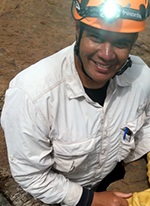 Australian research advisor: Professor Michael Bunce
Australian research advisor: Professor Michael Bunce
Australian host organisation: Curtin University
Title of research proposal: Understanding the legacy of seabirds and fire regimes in tropical dryland ecosystems
Research description:
Accounts from the early 1900s describe tropical dry forests as the most biologically diverse ecosystems in the Hawaiian Islands. In less than a hundred years, these systems have been completely transformed by modern fires, invasive species and clearing of land for agriculture. Today, tropical dry forests in Hawaii represent < 10% of their historic range. Efforts to restore these systems are based on historical accounts, because little is known about the structure, composition and dynamics of tropical dry forests in Hawaii prior to human arrival.
Until recently, fires were viewed as alien features of these systems that had been introduced by people. Radiocarbon dating of fossilised charcoal indicates that fire was a persistent feature in these systems prior to human arrival and suggests that in addition to the direct effects of burning, fire may indirectly influence the composition of Hawaiian dry-land ecosystems by modifying nutrient availability. Previous research suggests that the net effect of fire regimes over the long term can result in a deficit of plant available Phosphorus (P). Without additional P input from seabirds, repeated fires may lead to pre-mature declines in ecosystem productivity and plant available P.
We hypothesise that the decline of plant available nutrients in soils following fires may have been abated by nutrient subsidies deposited by prehistoric seabird populations known to exist in tropical dry forests.
Research activities:
Sub-fossil bone fragments too small to identify using morphological techniques are common in Hawaiian archaeological deposits. We used novel high throughput DNA methodologies developed at Curtin University’s TrEnD laboratory to examine the preservation of ancient DNA (aDNA) in thousands of unidentified avifaunal bone fragments from Hawaiian sub-alpine archaeological sites. We organised the bone fragment material into bulk samples by site and/or stratigraphic layer and used a planetary ball mill to pulverise sub samples from the bulk into a fine homogeneous powder. We then extracted aDNA from the powder using aDNA protocols in Curtin University's world renowned dedicated aDNA lab facilities.
Perspective of research after the program:
Preliminary analysis of aDNA sequences from samples that date back over 1000 years before present reveal a diverse range of taxa including endemic and extirpated taxa that no longer exist in the region. Also, analysis of seabird specific aDNA sequences show a significant decline in CytB haplotype diversty over time. This pattern suggests that a significant population bottleneck may have occurred at the onset of prehistoric resource exploitation. These data offer new insights and questions about the mode and tempo of pre-historic resource use in the sub-alpine regions of Hawaii. This research contributes to both practical and theoretical understandings about the prehistoric dynamics coupling people, resource availability and the landscape.
Australian advisor’s remarks:
In this program Kealoha embarked on an ambitious research program on a tight timeline. His work ethic and drive to produce data was exceptional. In only a short tenure he generated millions of DNA sequence reads and is well on the way to teasing-out a number of high quality manuscripts from the work. His research outputs far exceeded my expectations.
The TrEnD lab was pleased to host Kealoha - it is my hope that he will return to Brown University with a new set of skills in next generation laboratory techniques and data analysis.
Importantly the research output of this work will contribute to our limited understanding about the dynamic impact and function prehistoric seabird populations and wild fires may have had on the development of ecosystems in Hawaiian drylands.
Myself and other members of the TrEnD lab look forward to continued collaboration with Kealoha as he builds his academic career.
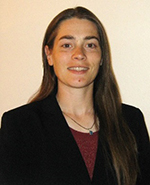 Australian research advisor: Dr Kathryn Linge and Dr Cynthia Joll
Australian research advisor: Dr Kathryn Linge and Dr Cynthia Joll
Australian host organisation: Curtin University
Title of research proposal: Identifying the feasibility and cost effectiveness of ozone as a treatment technology in water reuse systems
Research description:
N-Nitrosodimethylamine (NDMA) is a carcinogenic water contaminant that mainly occurs as a result of disinfection by chloramination and ozonation. NDMA is a particular concern for potable water reuse, which involves advanced treatment of wastewater to make it suitable for drinking. Compared to many surface and groundwaters that are typical drinking water sources, there is a greater variety of organic substances in treated wastewater that can react with chemical disinfectants to form unwanted products or disinfection byproducts (DBPs). Our knowledge of the formation pathways and mitigation strategies of these new DBPs is growing, but it is still limited. Western Australian water reuse facilities currently use membrane filtration, reverse osmosis and ultraviolet irradiation for advanced wastewater treatment. However, these are very energy intensive processes that result in waste products requiring careful disposal. Ozone is an alternative treatment technology that does not create waste products and could be employed if NDMA formation is low or prevented with pretreatment.
This project examined if ozone could be an alternative treatment technology for Western Australian reuse facilities by 1) determining potential direct NDMA formation by ozonation, 2) investigating pre-chlorination as a pretreatment strategy to reduce NDMA formation by ozonation or chloramination, and 3) comparing different treatment combinations on the basis of NDMA removal and cost.
Research activities:
My experimental research involved collection of four wastewaters from municipal treatment sites in Western Australia and conducting parallel treatment strategies in order to directly compare the results. Curtin University was able to arrange visits to the different treatment plants in order to collect the wastewater for testing. I completed the required safety trainings and was able to visit a couple of the treatment plants in person, which gave me an opportunity to ask the personnel about the treatment strategies used at that location.
NDMA analysis involved liquid-liquid extraction, gas chromatography with ammonia positive chemical ionisation and mass spectrometry. Initial characterisation of each wastewater involved chlorine demand & decay, ozone demand & decay, bromide, total organic carbon (TOC), ammonia and total nitrogen. The parallel treatments included ozonation (O3), pre-chlorination (Cl2) and post-chloramination (CLM) in the following 7 arrangements:
These combinations allow for direct comparison of each treatment step in order to determine its impact on NDMA formation and destruction.
Additionally, NDMA removal was researched in the literature for various other treatment technologies, such as reverse osmosis (RO), ultraviolet irradiation (UV), and ultrafiltration (UF). This information will be used to determine effectiveness of ozone and non-ozone treatment systems (e.g., Cl2-O3-CLM and UF-RO-UV-CLM).
At the end of my eight weeks, I gave a presentation to the extended laboratory group on my past research and the results of this laboratory-intensive project.
Perspective of research after this program:
My eight weeks at Curtin University were productive and enjoyable. Although the research was similar to work I have completed in the past, using different equipment and collecting wastewater in a different country required learning new skills. I was pleased to know that I could adapt to the new situation and master the new procedures quickly. Pre-chlorination pretreatment was new to me and I learned how to complete chlorine demand and decay tests as a result of this project. It was also a good opportunity to share ideas on common tasks between my research lab in the U.S. and the Australian host. I'm bringing back some new ideas and I shared some tips that they can use for their work.
Curtin University has a strong partnership with the local water and wastewater agencies, which is not always the case between academic and industrial institutions. This was extremely beneficial to me because it allowed me to reach out to several different treatment plants without causing any delay in my research. I can appreciate the work that went into forging that relationship.
I feel that I greatly benefited from the international research experience. It has increased my network of researchers and the research conversations have generated new ideas for more projects.
Australian advisor’s remarks:
It has been a great pleasure to host Erica's visit to the Curtin Water Quality Research Centre (CWQRC), under the EAPSI program. Erica arrived with a very ambitious program of research and succeeded admirably in generating a very interesting dataset that will be valuable both for her PhD research, as well as our own understanding of NDMA formation in wastewater. Her research seminar on her overall PhD research, as well as the results she produced while here with us at CWQRC was excellent, and her results are a wonderful complement to research we have previously carried out in this area. On a more personal note, Erica’s conscientious, knowledgeable and thoughful approach to her research has been a great example to all our team. She has been very easy to work with and it has been great for our younger researchers to interact and establish friendships with her. We hope that this visit will be the first step in ongoing collaboration with both Erica and the research team in Nevada and we would welcome her back to our laboratory at any time.
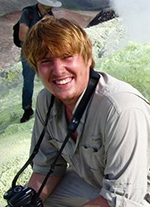 Australian research advisor: Dr David Bourne
Australian research advisor: Dr David Bourne
Australian host organisation: Australian Institute of Marine Science
Title of research proposal: Reconstructing the evolutionary history of coral-microbe associations to identify microbial taxa important to the health of their coral host
Research description:
The goal of this project is to gain further insight into the functional relevance of coral microbes to their host. Numerous studies have demonstrated host specificity in coral microbiomes, and the taxonomic composition of the microbiome is clearly important for coral health. However, the specific functional significance of the vast majority of individual microbial taxa is unknown. Further, the microbial partners of the majority of coral diversity have never even been explored on a basic level. Using culturing, metagenomics, and deep amplicon sequencing, I am thus describing for the first time the microbial communities of diverse coral hosts in an evolutionary context.
Research activities:
Sampling and separation of coral tissue compartments, DNA extraction, bacterial culturing and isolation.
Perspective of research after the program:
This program has helped me collect an excellent initial set of samples and has given me the opportunity to become much more familiar with the broader questions in coral biology and ecology. To understand the evolutionary implications of shifting coral-microbe associations, it is imperative that I understand on a holist level the stressors and environment that interact with the host coral to produce selective pressures. The experience I gained during this program through time in the field and extensive discussions with local researchers will help immensely with the implementation of the project and interpretation of my results in the future.
Australian advisor’s remarks:
Ryan has been an extremely dedicated and hardworking visitor both in the field and within the laboratory during his visit. He was able to accomplish a large sampling initiative of coral associated microbiota during a field trip to Lizard Island. While the field work was very important and beneficial for his own project, he was also extremely helpful in supporting one of my own PhD students doing this field work up at Lizard Island. Therefore this collaborative arrangment has been a big success and benefical for all parties. Ryan is a very independent and intellegent early career researcher and will go a long way in his future studies and life as a scientist. It has been pleasure to host him and facilitate some aspects of his current project. The scheme and funding provided to enable this visit is appreciated from all parties involved.
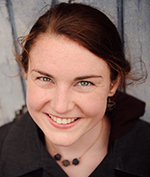 Australian research advisor: Professor Philip Munday
Australian research advisor: Professor Philip Munday
Australian host organisation: James Cook University
Title of research proposal: Investigating the behavioural and physical responses of the lemon damselfish to ocean acidification
Research description:
This project investigated behavioural and morphological responses to a slow, stepwise increase in CO2 to model the impacts of ocean acidification on fish. It sought to determine the extent to which a plastic, within-generation coping response, can be seen if acidity is elevated in small increments.
Research activities:
Three behavioural assays were used to measure response to CO2 at each of five phases, with an additional jump group that experienced immediate elevated CO2 to 100-year predicted ocean acidity. These investigated 1) response to a novel object 2) coral shelter utilisation and 3) aggression. Gills and brains were preserved in fixative for future electron microscopy work. In addition, in a collaboration developed at the beginning of the EAPSI program, gills were flash frozen to investigate enzyme activity.
Perspective of research after the program:
I look forward to processing tissue samples and analysing behavioural results once I return to the US, and fully expect to have results to publish in the near future.
Australian advisor’s remarks:
It has been a delight hosting Wren Patton’s visit and engaging with her research project. Wren quickly settled into our lab and has been exceptionally dedicated and diligent in conducting her ambitious project. She has successfully completed a complex experiment to test the behavioural and morphological responses of reef fish to an incremental increase in CO2. Wren demonstrated great networking and problem solving abilities during the project, overcoming a number of challenges posed by the experiments to bring it to completion. I have no doubt that there will be several good publications resulting from the project. Wren has also gained substantial knowledge about ocean acidification research that she will take back with her. I am sure there will be lasting collaborations as a result of the many new scientific contacts and friendships developed during the project.
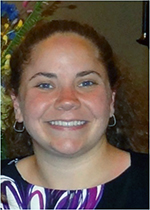 Australian research advisor: Professor Sebastien Perrier
Australian research advisor: Professor Sebastien Perrier
Australian host organisation: Monash University
Title of research proposal: Peptide-polymer conjugates as tissue engineering scaffolds and gene/delivery vehicles
Research description:
The aim of our research project was to functionalise polymers and subsequently conjugate the polymer to peptides via highly efficient chemistries. The peptide-polymer conjugates we proposed to synthesise have applications in the field of biomaterials as potential scaffolds for tissue engineering or more efficient drug delivery vehicles.
Research activities:
The research that was to be conducted at the Monash Institute of Pharmaceutical Sciences (MIPS) was to take functionalised synthesised polymers and peptides in order to implement a variety of conjugation chemistries and ultimately evaluate their conjugation efficiencies. The chemistries used are known to be high yielding, such as thiol-ene 'click' chemistry and NHS coupling.
We first investigated the efficiency of thiol-ene coupling between a short peptide sequence and a polymer so as to establish ideal conditions for conjugation of larger peptides. We had difficulty conjugating the polymer that contains the thiol moiety to the short peptide sequence. Since time was limited, we decided to simplify the reaction by using a short thiol containing molecule that should be more reactive than the thiol of the polymer. We also investigated the use of NHS chemistry, which allows us to functionalise the polymer with a reactive ester. The ester was formed at the terminus of the polymer and then reacted with the N-terminus of the peptide.
Perspective of research after the program:
The time I spent in Australia for the EAPSI fellowship was an incredible experience and one that will be very beneficial for my career. The host mentor and laboratory group made my short stay very memorable and enjoyable. After spending eight weeks in an international research setting, I realised collaboration is extremely valuable for the advancement of science. Working with a new research group comprised of a variety of backgrounds/experiences allows for greater insights into the research being conducted. We look forward to continue this project and collaboration post EAPSI.
Australian advisor’s remarks:
During the time Katie has spent in MIPS, she has proven to be a very pro-active researcher, working independently and generating all the time new ideas to overcome the problems that she was facing during her research project.
She has learnt how to synthesise and characterise peptides and she has also gained knowledge in some techniques of conjugation between polymers and these peptides. She showed she could manage well her project, and when facing unexpected results in her project, she designed new strategies to move forward. Katie worked side by side with Joaquin Sanchis, a member of my group in MIPS. This time spent together ensures an excellent and fluent communication between both MIPS and Clarkson groups and therefore the ground for a long term collaboration has been consolidated.
In addition to develop her project, Katie also had the opportunity to interact with other research groups within MIPS, which allowed her to increase her knowledge in pharmacological sciences, and enriched further her experience in our Institute.
Aside of the lab, Katie integrated very well with the Australian culture (for instance, she has become very keen on AFL!) and the rare time she was not working hard on her project, she travelled to Canberra and Sydney, and established a solid network with other participants in the EAPSI summer program.
In summary, I am very pleased to have hosted Katie. I think it has been a very positive exchange experience (for both sides) and I expect it will trigger a fruitful collaboration with Professor Shipp’s and Professor Dong’s labs.
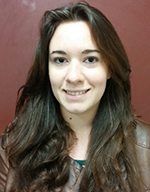 Australian research advisor: Dr Dhriti Bhattacharyya
Australian research advisor: Dr Dhriti Bhattacharyya
Australian host organisation: ANSTO
Title of research proposal: In situ microtensile testing of ion beam irradiated single crystal nickel
Research description:
Due to the difficulties that arise with obtaining and handling sufficient quantities of nuclear reactor-irradiated materials, micron-scale mechanical testing of irradiated materials is under development in many nuclear research labs. This project explored microtensile testing in particular, performed with a custom built apparatus for testing in situ in an SEM. Single crystal nickel samples irradiated with helium ions in an accelerator were tested as a proxy for more complex polycrystalline alloys to be similarly tested in the future.
Research activities:
Tensile specimens with a length of ~25 microns and diameter of ~10 microns were manufactured from irradiated and non-irradiated samples using focused ion beam (FIB) milling techniques. The in situ tensile testing procedure was then developed, and tests were successfully performed on samples of two different irradiation conditions in addition to the non-irradiated control specimens. Preliminary data analysis was done of the load-displacement data, as well as digital image correlation to allow for strain mapping.
Perspective of research after the program:
Our success in microtensile testing gives a positive outlook for the advantages of this technique in testing irradiated materials. Though sample preparation is extensive, the consistency of the results and wealth of information provided by the testing technique place it as a very worthwhile method in micromechanical testing.
Australian advisor’s remarks:
The EAPSI scholarship program provides a very good opportunity to graduate students from the US to come and work in Australia, learn some new skills where possible and perform some experiments. I am glad to report that our guest student this year, Ms Ashley Reichardt from the University of California, Berkeley, was able to participate in a very fruitful series of experiments involving in-situ testing of ion-irradiated single crystal nickel film. These experiments have yielded important and valuable results which will go a long way in understanding the effects of ion-irradiation and consequent damage on the mechanical properties of metals. Ms Reichardt's skills on the focused ion beam instrument were especially useful in the fabrication of the special samples used in the in-situ tensile tests, and she proved herself to be a good experimentalist in the short duration of her visit to ANSTO.
I feel that the program can become much more fruitful if the duration of the student’s working period is increased from 8 weeks to 10-12 weeks, as it would then make it easier to complete a planned series of experiments without anxiety or rush, and make the learning and research experience for the student more fruitful by allowing time for thoughtful improvisations and modifications to the planned experiments where necessary, and for analysis of data.
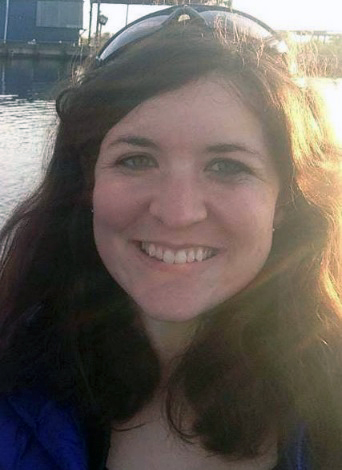 Australian research advisor: Dr Devi Stuart-Fox
Australian research advisor: Dr Devi Stuart-Fox
Australian host organisation: The University of Melbourne
Title of research proposal: Do bright colours startle predators? An experimental test of a possible antipredatory mechanism
Research description:
I worked with Devi Stuart-Fox to accomplish two goals: to learn to calculate visual contrasts, and to create realistic plasticine models of my study organism for predation and response behavioural experiments.
Research activities:
I accomplished both goals. Devi walked me through the process of visual modeling and calculating contrasts and I can now apply this knowledge to other projects and research questions. She also helped me create realistic molds, models, and paints that exactly match the reflectance spectra of my study organism. Finally, she worked with me on designing the behavioral experiments I plan to do in the next few months in the US.
Perspective of research after the program:
I still believe this research is valuable and I look forward to finishing the project and writing up the paper. The skills I learned while at The University of Melbourne will be useful in future research projects and the experience was very valuable.
Australian advisor’s remarks:
It was a pleasure to host Beth, who is a very astute, motivated, independent and efficient student. My lab group benefited from interaction with Beth and we all enjoyed having her as part of the research group for the two month visit. Beth accomplished her aims and I hope that she benefited from, and enjoyed, the experience. While in Australia, Beth established important connections with several researchers in her field (apart from myself) and these connections will result in ongoing communication, which will help Beth in her research. In my view, this is an excellent program.
Australian research advisor: Dr Gary Sheridan
Australian host organisation: The University of Melbourne
Title of research proposal: Understanding the pre-conditioning effects of solar radiation and precipitation on post-wildfire erosion
Research description:
The goal of my research was to explore how landscape aridity affects post-wildfire erosion. In southeastern Australia, landscape aridity varies strongly with aspect such that north-facing hillslopes are more arid and south-facing hillslopes are more wet. I conducted research using remote sensing, field investigations, and numerical modeling to investigate how differences in aridity due to aspect translates into erosional processes and ultimately hillslope asymmetry.
Research activities:
During my time here there were three major activities that I focused on: remote sensing analysis, field investigations, and numerical modelling. My Australian colleagues had a topographic dataset of raw airborne LiDAR data, which is topographic data obtained using laser pulses shot from an airplane. I spent most of my first week constructing a digital elevation model (DEM) of our research areas from the raw LiDAR data, and I subsequently used the DEM to analyse landscape properties such as slope, curvature, hillslope asymmetry, and catchment drainage area. We used the high resolution DEM to direct field investigations, where we analysed soil properties.
In the following weeks I spent at least one day each week conducting field investigations. In the field I focused on measurements of soil properties and the soil/bedrock transition. Through field sampling we found that north-facing slopes tended to have shallow soil depth compared to south-facing slopes. In addition the south-facing slopes conducted water more easily due to higher density of macropores and more bio-turbation. At some north-facing slopes we found intact soil hydrophobic layers.
When I was not conducting field work, I used numerical modelling to test a theory that south-facing slopes erode primarily due to hillslope diffusion, whereas north-facing slopes erode via overland flow during periods after wildfire. I was able to simulate slope formation over 800,000 model years and found that simulated slopes had very similar slopes and curvatures to the slopes we saw in our DEM and the modelled soil depths showed similar patterns to those measured in the field.
Perspective of research after the program:
I benefited from working with a well organised team with good access to field vehicles and equipment. This reduced the time I needed to dedicate toward planning, and I would highly recommend that future particpants pair with a research group that is well equiped like mine. Moreover, I would say that iterating between numerical modelling and trips into the field helped me to test ideas. I was able to iteratively change and re-form my opinion based on field observations.
Australian advisor’s remarks:
Francis Rengers’ visit was very productive and rewarding for all involved. Francis combined field measurements/parameterisation in our burnt forests, and theoretical development of a 1-D numerical slope evolution model. This proved to be a very successful combination, and Francis produced a working, parameterised model within the duration of his stay. We intend to continue our working collaboration as a result of this research visit.
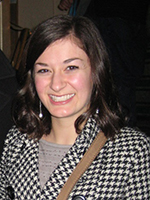 Australian research advisor: Dr Dirk Erler
Australian research advisor: Dr Dirk Erler
Australian host organisation: Southern Cross University
Title of research proposal: Exploring the mysterious behaviour of nitrogen cycling in seagrass ecosystems
Research description:
Examining the environmental controls of nitrogen cycling processes in coastal ecosystems, including the influence of nutrient supply, source of carbon (dead plant vs. algal material), and potential for greenhouse gas production.
Research activities:
Field and laboratory experiments on seagrass, mangrove, and estuarine sediments to discern microbial nitrogen cycling rates.
Perspective of research after the program:
Nitrogen removal processes, denitrification and anammox, differed in both absolute and relative rates in the coastal systems surveyed. The amendment of sediment cores from a seagrass system with particulate organic matter from seagrass and phytoplankton detritus induced changes in the competitive interactions of denitrifiers and anammox bacteria. This included increases in the absolute rates of nitrogen removal, changes in the relative contributions of the two processes, and increases in the production of the greenhouse gas nitrous oxide. This study will provide novel perspectives on the impact of organic carbon on nitrogen removal processes in coastal sediments, the first report on nitrous oxide emissions from seagrass ecosystems, and a new application of a revised modeling approach for stable isotopic tracing of nitrogen removal processes.
Australian advisor’s remarks:
The EAPSI program has provided an excellent opportunity for Kateri to build a collaboration with like minded scientists in Australia. The project has been highly successful and we anticipate that a publication will be forthcoming in the not too distant future. The program has been an overall success in my opinion.
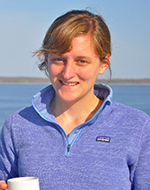 Australian research advisor: Professor Matthew England FAA
Australian research advisor: Professor Matthew England FAA
Australian host organisation: University of New South Wales
Title of research proposal: Patterns and climatic mechanisms of Southern Hemisphere extratropical ocean heat waves
Research description:
Prolonged periods of extreme and large-scale warming have had significant consequences to marine ecosystems by causing mortality of commercially valuable fish and widespread coral bleaching. These events are referred to as ocean heat waves and are a new and emerging global climate phenomenon in which very little is known. This research project characterises the spatial patterns of accumulated sea surface temperature in the Southern Hemisphere extratropics. We propose an operational index for ocean heat waves and explain the possible formation mechanisms of ocean heat waves by connecting previous knowledge with new observations. The proposed ocean heat wave index quantifies the intensity, duration and spatial extent of extreme warming events into a single metric. We examine both atmospheric and oceanic properties that influence ocean heat waves, as well as dominant modes of Indo-Pacific variability such as the El Niño-Southern Oscillation and the Indian Ocean Dipole. We were surprised to find a Hemisphere-wide pattern in the frequency of ocean heat waves that is closely related to the clustering of La Niña events in the equatorial Pacific Ocean.
The project results show that large year-to-year variability of past extreme temperature events may not necessarily be predictive of where and when future ocean heat waves (or cold waves) will occur. However, knowing the underlying mechanisms may be more informative when examining extreme events on the global scale. We also find that ocean heat waves can be spatially and temporally patchy even when associated with large-scale climatic events like El Niño-Southern Oscillation; nonetheless there is evidence of a Southern Hemisphere-wide pattern of ocean heat waves in the extratropics. This study has made significant contributions to the overall understanding of ocean heat wave dynamics and is the first known study to show this Hemisphere-wide pattern.
Research activities:
New high-resolution datasets now allow us to look more closely at the time and spatial scales at which temperature anomalies occur. I used daily and monthly high-resolution sea surface temperature data derived from in situ and satellite observations from the modern satellite era post-1979 to present. I identified four regions in the Southern Hemisphere that were most consistent with extreme warming and computed a percentile-based ocean heat wave metric. The time series of the index shows trends in the frequency and magnitude of ocean heat waves over a 34-year period. I compared the frequency of ocean heat waves to the phase change of El Niño-Southern Oscillation, the Indian Ocean Dipole and the Southern Annular Mode index. Composites using reanalysis data from the ERA-Interim, SODA and GODAS models show the dynamical ocean-atmosphere processes that precondition ocean heat waves.
Perspective of research after the program:
My research in Australia was enhanced through productive meetings with Professor England and researchers at the Climate Change Research Centre (CCRC) at the University of New South Wales (UNSW). The EAPSI experience was a tremendous success in terms of research productivity and professional networking. It was a privilege to be actively involved at such a high-level research centre and I feel very fortunate to have been awarded the opportunity to exchange ideas and build international friendships. During my visit, I learning new analytical skills and programming languages that will be immensely beneficial in my future research endeavours. The research outcomes of EAPSI have allowed me to add an additional chapter to my master’s thesis and have presented further research questions I hope to pursue as a doctoral student. After the EAPSI experience, I feel better prepared to undertake future collaborations in Australia as an early career scientist.
Australian advisor’s remarks:
Hillary's achievements during this program have been nothing short of outstanding. In a really short period of time Hillary succeeded in progressing on a research project to the point of having a set of mature analyses ready for write-up for a journal publication. This work is likely to be of high impact given the novelty of the topic - ocean heat waves - and also the nature of the new findings, including the links to modes of climate variability as well as to climate change. Hillary participated in the full gamut of research activity while visiting UNSW - attending seminars, discussion groups and research meetings, as well as presenting her own work via two research seminars, and giving a talk in our "paper discussion series". Hillary's communication skills were outstanding, and her approach to this research was intelligent, balanced, highly competent, and strategic. In short the program was a huge success, and Hillary achieved much during her stay at the CCRC.
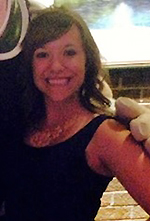 Australian research advisor: Dr Stewart Fallon
Australian research advisor: Dr Stewart Fallon
Australian host organisation: Australian National University
Title of research proposal: Development of paired U/Th and radiocarbon ocean ventilation records using deep-sea corals
Research description:
The proposed research project applies novel U/Th dating methods coupled with radiocarbon dating to develop age and growth rate records of cup corals, Desmophyllum sp. along the Mid-Atlantic Canyons in the Northern Atlantic Ocean. Developing the independent means to determine life-span and growth rates of deep-sea corals. Pairing independent chronometers, such as U/Th dating with radiocarbon dating, allows for the reconstruction of ocean ventilation rates dating back to the Last Glacial Maximum (~20,000 years). The overall goal is to examine the paleo-ecology of deep-sea corals by developing geochemical proxies in both the proteinaceous and carbonate skeletons of deep-sea corals to assess their vulnerability and recovery rates from natural and human-induced disturbances.
Research activities:
At the Australian National University (ANU) I completed the radiocarbon dating of 42 deep-sea cup corals. Along with trace metal analyses on all of the deep-sea corals for my research project. The U/Th dating was not able to be completed during my stay at ANU due to difficulties of not having access to the clean laboratory and the instrumentation needed to complete the solution U/Th dating.
Perspective of research after the program:
After leaving the EAPSI program and Australia I will continue research on the same deep-sea coral samples, looking at neodymium isotopes to reconstruct ocean circulation in the Northern Atlantic Ocean over the past 1,000 years. Measuring the neodymium isotopic composition of the deep-sea corals is a proxy measurement used to reconstruct changes in surface, intermediate, and deep-water circulation patterns. To complete a calibration test on the laser work done I will further my research I completed at ANU back at Texas A&M University. Once completed the research will allow for presentations at conferences and publishing of research papers.
Australian advisor’s remarks:
Mackenzie hit the ground running on her arrival to my lab. She came well prepared with samples ready and learned the radiocarbon dating preparation in the first few days. She was able to analyse all the samples and more in her time. She was extremely helpful in the lab as well. She also was able to obtain trace metal analyses on a subset of her deep sea corals. Unfortunately due to recent retirement the clean laboratory and U/Th dating could not be accomplished. Her research results will be combined with other measurements already undertaken at Texas A&M and she is currently preparing a manuscript from her time here. This program provided a great avenue for her to come to Australia, learn specific laboratory methods and prepare a suite of samples. I found this program to be of great benefit to both Mackenzie and my laboratory and hope to be involved again in the future. Mackenzie has a great research future ahead of her and she is always welcome in the lab.
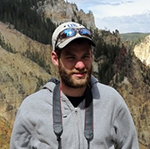 Australian research advisor: Dr Paul Bertsch
Australian research advisor: Dr Paul Bertsch
Australian host organisation: CSIRO
Title of research proposal: Quantification by real time RT-PCR of RNA viruses in untreated and treated wastewater in southeast Queensland, Australia
Research description:
Water availability is already a critical issue in many areas of the world, including much of Australia. Current trends in urbanisation and global climate change suggest that water shortage will only become more severe with time. To better prepare to deal with water shortage challenges in the future, we must focus on developing improved methods for water conservation, including water recycling programs, and improved methods for ensuring that recycled water is high quality.
Currently, a number of researchers around the world are interested in elucidating the microbiological quality of recycled water. Microbial retention through standard wastewater treatment represents a major knowledge gap in the field, particularly with respect to viruses. Standard protocols for detecting pathogens in water utilise bacteria as indicator organisms. Thus, if a treated wastewater sample tests negative in culture for fecal coliforms, the treatment is considered sufficient and the wastewater effluent is considered high enough quality to discharge. However, recent research indicates that these standard assays do not accurately reflect virus concentrations in treated wastewater. Even in samples with very low or no coliform counts, virus concentrations can still be high enough to be infectious.
In light of this, it is necessary to develop improved methods for detecting viruses in treated wastewater. A suite of infectious viruses are typically found in untreated wastewater; we were primarily concerned with RNA viruses responsible for gastroenteritis (vomiting and diarrhea).
Research activities:
We developed RT-qPCR methods for identifying and quantifying a suite of RNA viruses in wastewater. The viruses we studied were Aichivirus, Astrovirus, and Sapovirus. In addition, we quantified the plant virus PMMV (pepper mild mottle virus) to investigate whether it may be a useful indicator virus for the RNA gastroenteric viruses.
For sapovirus and astrovirus, we used published primer and probe sets. We designed novel primer and probe sets for Aichivirus and PMMV.
Perspective of research after the program:
…
Australian advisor’s remarks:
Kenton came to CSIRO on his NSF fellowship for a short visit. He was assigned a small sub-project on the development of quantitative PCR method for the detection of RNA virus in primary and treated effluent. During his stay, he completed a brief literature review, learned how to design and evaluate new primer sets, cloning of amplified DNA into E. coli vector and preparation of cDNA standards. Kenton possesses a good understanding of molecular biology and has worked very hard to pick up new skills in environmental microbiology. In spite of a very short time on the project, Kenton managed to learn new skills quickly any apply them under minimal supervision. His effort in designing new PCR primers and cloning in vectors to produce standards for the quantitative PCR has helped our group to advance our research work more rapidly. In the future, Dr Jatinder looks forward to using these primer sets for the quantitation of RNA virus in wastewater samples and Drs Toze and Jatinder expect a joint publication from the work. Kenton was a conscientious, hardworking, independent, and quite talented student. It was indeed a pleasure hosting Kenton Sena and his research experience appears to be mutually beneficial.
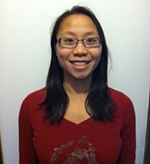 Australian research advisor: Dr Sarah Boyd
Australian research advisor: Dr Sarah Boyd
Australian host organisation: Monash University
Title of research proposal: Gene regulatory network inference
Research description:
Modelling gene regulatory networks (GRN) is crucial to understanding how genes, proteins and other DNA components interact to carry out cellular processes. Successful reconstruction of GRNs allows prediction of cellular behavior in response to external stimuli such as stress and carcinogens. Additionally, identification of influential genes in the network can illuminate the development of certain diseases and inform the design of targeted therapy. Therefore, good models that accurately reflect the workings of a GRN are important for health research. The aim of this project is to build GRNs that faithfully capture real network behavior. Collaboration with Dr Sarah Boyd and Dr Jonathan Keith of Monash University, Australia, experts in the field of molecular biology and computational biology, has resulted in the application of a new technique, called the Neighbourhood Sampler, to build and infer GRNs.
Among different approaches for modelling GRNs, Boolean networks (BoN) are simple to implement and provide a qualitative interpretation of genetic interactions. Many BoN inference techniques often limit network investigation to one estimate. In contrast, we build networks using a Bayesian approach, which yields a distribution of network estimates, from which true network properties are estimated. Additionally, Bayesian inference accommodates both data and model uncertainty. However, Bayesian inference is under developed in Boolean network reconstruction. The Neighbourhood Sampler by Keith et al. (2004) is a Bayesian technique that uses a new Monte Carlo Markov Chain sampler to select from discrete model spaces. The sampler is efficient and readily adaptable to network sampling. The results of the model fit are estimates of the existence and type of regulatory relationships (up regulation or down regulation) in the true network.
At the conclusion of EAPSI, the Neighbourhood Sampler was successfully implemented for small synthetic BoN networks and the budding yeast cell cycle network. Future work includes assessing the performance of the Neighbourhood Sampler with larger synthetic networks and real data, and comparing the sampler to other inference methods for BoN networks.
Research activities:
Perspective of research after the program:
Computational modelling and inference in systems biology are active global areas of research, with researchers from many different disciplines such as biology, mathematics, statistics, computer science, and physics, collaborating to understand how these systems work.
Australian advisor’s remarks:
It has been an absolute pleasure hosting Van at Monash University. She has integrated extremely well into our team, and has made the most of every opportunity that has come her way, both professionally and personally. Van has exceptional interpersonal skills, she conducts herself professionally, and she shows great thought and aptitude in her work, being able to work both independently and collaboratively. She has a very bright future, and she will always be welcome at Monash.
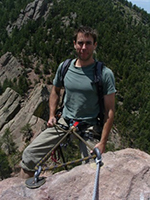 Australian research advisor: Brian Fuller
Australian research advisor: Brian Fuller
Australian host organisation: Genesis Software
Title of research proposal: Deployment of a coherent multistatic specular meteor radar for high-resolution observations of the mesospheric wind field
Research description:
Deployment of a software-radio based phase-coherent multistatic meteor radar. A transmitter was deployed at the existing Delamere radar site and both forward and back-scatter from meteor trails was received using the Delamere interferometer and a single antenna at GS headquarters. We have demonstrated and developed the feasibility and built the framework for future experiments involving phase-coherent multistatic meteor radar.
Research activities:
Perspective of research after the program:
The research has gone well and we are well-suited for future collaborations with a number of groups around the world using the techniques developed under this EAPSI award.
Australian advisor’s remarks:
This collaboration between the University of Colorado at Boulder and my Adelaide-based company Genesis Software has proven successful in demonstrating the software-radio based phase-coherent multistatic meteor radar technique. We are excited about future collaborations with Mr Vaudrin and the University of Colorado and we are very impressed by Mr Vaudrin’s knowledge and capabilities and with the enthusiasm and dedication with which he as executed this project. In addition, our work with leading research institutions around the world (e.g. the Institute for Atmospheric Physics in Germany) stands to benefit from the work done under the EAPSI program - development and demonstration of the fundamental feasibility of this technique was made possible by the EAPSI-AAS award.
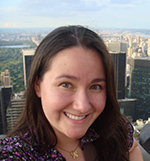 Australian research advisor: Dr Michael Ireland
Australian research advisor: Dr Michael Ireland
Australian host organisation: Australian National University
Title of research proposal: A search for companions to the most massive nearby stars
Research description:
In this observational astronomy project, the Sydney University Stellar Interferometer (SUSI) in Narrabri, New South Wales was used to obtain optical interferometric measurements of nearby B-type stars, the most massive stellar neighbours of the Sun. With a sample of 52 B-type stars with distances less than 75 parsecs, I obtained new data of the targets in our sample visible during the Southern Hemisphere's winter season. The high angular resolution of these data allows us to discover new stellar companions to these stars, complement observations of existing binary pairs detected with other techniques (spectroscopy), and refine parameters for previously-known multiple systems. I am currently combining these data with other existing measurements of the sample stars, including those stars visible from the Northern Hemisphere, which will allow us to form a census of high-mass single and multiple star systems in the solar neighbourhood.
Research activities:
While working at the Australian National University, I learned techniques of optical interferometry; collected data on available clear nights with the SUSI; set up my personal computer to conduct remote observations with SUSI after returning to the US; conducted an on-site trip to SUSI with my advisor to perform maintenance and engineering tests and become familiar with the instrument; learned to use the SUSI data pipeline and existing analysis tools; conducted literature searches of related studies on similar samples to incorporate into the analysis; and discussed improvements to the data reduction pipeline and analysis techniques, as well as related scientific objectives with existing data.
Perspective of research after the program:
It was challenging and rewarding to familiarise myself with the new techniques required for this project, and I look forward to gaining more experience with optical interferometry on future projects. The EAPSI fellowship and the time and mentorship provided by my advisor and colleagues provided an exceptional opportunity to enhance my skills and hands-on experience, which will certainly prove integral to my future career. After establishing an initial framework of knowledge while in Australia and building collaborations with Dr Ireland and the SUSI team, I can continue to obtain data remotely from the US and should be able to complete the last of the observations and analyses within the next few months, which will culminate in one or more publications. I am enthusiastic to see what the synthesis of the existing data holds in store, and I anticipate continuing to work on related projects using these frontier astronomical techniques.
Australian advisor’s remarks:
The goals of Kim's visit to Australia were always ambitious, and many of them were achieved. She worked hard and collaboratively, and was an active member of the department during her visit. In addition to Kim's primary goals of her stellar multiplicity work, it is my hope that with her ability to use SUSI remotely and her interest in hot stars, we can work together in a collaboration over the next year to measure diameters and fundamental parameters of many nearby B stars. The ultimate aim is to place them in the broader Galactic context, including their formation and dynamical interaction history.
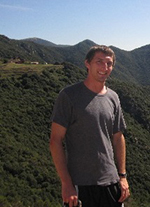 Australian research advisor: Dr Michael Batanin
Australian research advisor: Dr Michael Batanin
Australian host organisation: Macquarie University
Title of research proposal: Studying the interplay between localisation and categorical algebra via algebraic topology
Research description:
Our EAPSI proposal stated that we would attempt to understand the relationship between the following two situations. Both require some assumptions, but under a certain set of assumptions both are possible and we wanted to understand the connection between them. In the first, we apply left Bousfield localisation to a monoidal model category and then consider the model category of algebras over some monad (e.g. an operad). In the second, we consider the model category of algebras over some monad and then apply Bousfield localisation to this model category. Our proposal contained the following conjecture. Suppose both of these processes can be done, and in the first suppose we are inverting a class of maps C. If in the second we invert the class of maps T(C) where T is our monad and T(-) is the free T-algebra functor then the output of the first process is equivalent to the output of the second. In our very first week of working together, my host Michael Batanin told me he had considered this problem years ago, but had never published the results of his findings. Building on that work we were able to prove the conjecture under the assumption that both procedures are possible.
In practice this assumption is rarely satisfied, though the weaker assumption that the category of algebras over a monad forms a semi-model category is often satisfied. We therefore set out to extend the proof of this conjecture to the semi-model category case. We completed this goal at the end of the summer (though some writing still needs to be done), and this makes up one of our five papers that we hope to publish based on our investigations over the summer. This paper also contains a comparison between the hypotheses which I needed in my thesis to make the first procedure work, the hypotheses that Michael needed in recent work with Clemens Berger to make the second procedure work, and the hypotheses needed by Carles Casacuberta and co-authors as they addressed related problems over the past several years. We unify these three approaches into a single framework.
En route to this result, a great deal of theory related to Bousfield localisation of semi-model categories was required. I accomplished this in spare moments throughout the summer and believe that this work merits a paper in its own right. This paper also addresses what can be said about combinatorial semi-model categories, a topic which has not been treated elsewhere to my knowledge. This work forms the second of the five papers and one which is closer to being ready to submit, since all of the mathematics has been written.
Having successfully resolved the conjecture which we promised to investigate, we moved on to problems more closely related to Michael’s research program. In order to find a quick proof of the Baez-Dolan Stabilisation Hypothesis we extended the results in my thesis to encompass a monad which I had not considered and to hold for some model categories I had not considered. My thesis introduced a new axiom that a model category can satisfy, called the commutative monoid axiom, which guarantees that the category of commutative monoids admits a model structure. We proved (using the recent Batanin-Berger paper) that the commutative monoid axiom also implies the category of symmetric non-reduced operads admits a model structure. In my thesis I verified that the commutative monoid axiom holds for many of the known model categories of interest. Michael and I extended this list to contain the model categories of n-fold complete Segal spaces (invented by Charles Rezk). Thus, the category of non-reduced operads in these model categories can be given a model structure, and this will be of use to Michael in a paper he is writing which resolves the Stabilisation Hypothesis. We plan to submit our paper on this topic in the near future. It is worth remarking that in order to apply Bousfield localisation to a category of algebras over a monad one must prove that the model structure on this category of algebras is left proper. The paper of Batanin-Berger provides a way to do this, and while working on this project I was able to extend my thesis results to give a left proper model structure on commutative monoids (as well as on non-reduced operads).
Most of the work described above makes use of the language of semi-model categories. However, most researchers in this area are much more comfortable with model categories. The reason semi-model categories exist is the failure of a certain commonly used transfer principle which checks most, but not quite all, of the model category axioms on the category of algebras. Towards the end of our summer we set out to remedy this defect of the theory and improve existing theorems which give a semi-model structure so that they give a full model structure. Recently, two teams of researchers have begun to study the category of pairs (O,A) where O is an operad and A is an O-algebra. For a large collection of operads O, the category of O-algebras is known to be a semi-model category. We realised that when this category of pairs can be given a model structure then that model structure can be used to check the remaining model category axioms on the category of O-algebras (and if the category of pairs is (relatively) left proper then so is the category of O-algebras). Furthermore, the category of pairs can be given a model structure using the machinery of the Batanin-Berger paper. Thus, for operads O which in the past only had a semi-model structure on O-algebras we now have a full model structure, removing the need for semi-model categories in the theory. Indeed, our proof is general enough to hold for colored operads and more general monads as well. We have written this paper fully and hope to submit it soon. This work allows for an approach to an open question left over from the Batanin-Berger paper which seeks to extend those results to an enriched setting (e.g. considering operads which are valued in some model category rather than just in the category of sets). We hope that our work will allow us to say something about this enriched question, perhaps in conjuction with the work described in the paragraph below.
Much of the work described here involved linking the work in my thesis (the commutative monoid axiom) with the recent work of Batanin-Berger on tame polynomial monads. Commutative monoids are not tame, but the commutative monoid axiom still allows them to inherit a model structure. Michael's post-doctoral researcher, Dr Mark Weber, is working to extend the results of the Batanin-Berger paper to a more general setting, and it is natural to ask which monads T will inherit a model structure on T-alg if the commutative monoid axiom is assumed. Michael, Mark, and I began work on this problem and proved that a certain class of discrete non-polynomial monads T will have a model structure on T-alg, assuming the commutative monoid axiom. We are currently writing this work up and we plan to phrase it in terms of Mark's research program.
Research activities:
I met with Michael on a daily basis and we often discussed several of these problems during any given week. We then spent the weekends writing up the results of these discussions. The writing process often revealed new questions which we could study in the following week. Additionally, I used my commuting time on the train to read several papers I had not read before, and I often found myself presenting the results of these papers to Michael's research group. I found this a valuable way to deepen my understanding of this field, to relate our new work with existing work, and to come up with new questions and approaches. Additionally, Michael, Mark, and I all gave talks in the Australian Category Theory Seminar hosted at Macquarie University, in which we presented research related to the work above. This was a great way to advertise our work to the audience and to solicit questions and comments to drive us to extend the work further. Finally, I made a research visit to The University of Melbourne where I gave a talk on my research and met several members of the math department. This trip was valuable again to advertise our work, but also to foster connections which may lead to research collaborations in the future.
Perspective of research after the program:
I am very pleased with the amount and type of research we accomplished during my visit. My thesis ends with an entire chapter full of open problems, and I believe we managed to resolve basically all of the problems related to (semi) model categories of algebras over monads. In Michael Batanin, I found someone with extremely similar interests to my own, but often with entirely different approaches to solving these problems. I think this is exactly what's needed to make a good research team. Combining our approaches can lead us both to new results, and almost every conversation we engage in can lead us to new questions to work on in the future. I am very hopeful that we will continue to collaborate in the coming years, that we will meet again either in Australia or at conferences in Europe (or both), and that we will apply for grants together.
Australian advisor’s remarks:
I think the report written by David reflects very well the type of activities and results obtained during his visit to Macquarire University. The combination of David's deep understanding of interaction between homotopy and algebraic structures and my, and my collegues, categorical point of view on the subject turned out to be extremly fruitful. We were able to solve problems which were around for many years and we outlined new projects for several years ahead. I very much hope to keep my contacts with David and to have more chances for close collaboration in the future.
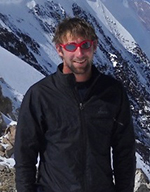 Australian research advisor: Dr Ross Edwards
Australian research advisor: Dr Ross Edwards
Australian host organisation: Curtin University
Title of research proposal: Changes in south pacific climate as archived in the Roosevelt Island black carbon record
Research description:
Black carbon (or soot) in ice cores is a valuable record of the history of climate change. Not only can black carbon teach us about the climate system and how it has changed, but black carbon deposited on a glacier will change the reflectivity of the snow and can lead to accelerated melting. During the EAPSI program, I measured black carbon concentrations in an ice core drilled on Roosevelt Island, within the Ross Ice Shelf in Antarctica. This black carbon record is one of the world's oldest black carbon timeseries and contains valuable information about oscillations in Pacific climate and the response of the West Antarctic Ice Sheet to global and regional climate change.
Research activities:
To obtain the data desired for my research it was necessary to melt the ice cores in order for the black carbon contained therein to be mobilised and ready for analysis. My task during the EAPSI program was to prepare the ice cores for melting by cutting and cleaning them. I was then responsible for the instrumentation used to measure black carbon during the melting of the ice itself. Towards the end of the program, I assisted in transporting and re-assembling the black carbon instrumentation so that it can be used for future projects.
Perspective of research after the program:
I will use the data that I have obtained during the EAPSI program to link the black carbon record from Roosevelt Island to decadal to centennial scale climate changes in the last several centuries. I will also determine the effects, if any, that black carbon has had on glacial mass balance and melt events in Antarctica. I will be directly responsible for one publishable manuscript resulting from the data gathered during the EAPSI program, although many collaborators will generate additional work based on the data the I have helped collect this summer.
Australian advisor’s remarks:
It has been a great pleasure to host Dom and to include him in our research program. Dom helped to complete the extremely difficult RICE ice core analysis and continues to be an important member of the team. He is participating in the data processing phase and will lead one of the publications. This has been a great experience for everyone invovled. Great student, great research, everyone has benefited.
© 2024 Australian Academy of Science